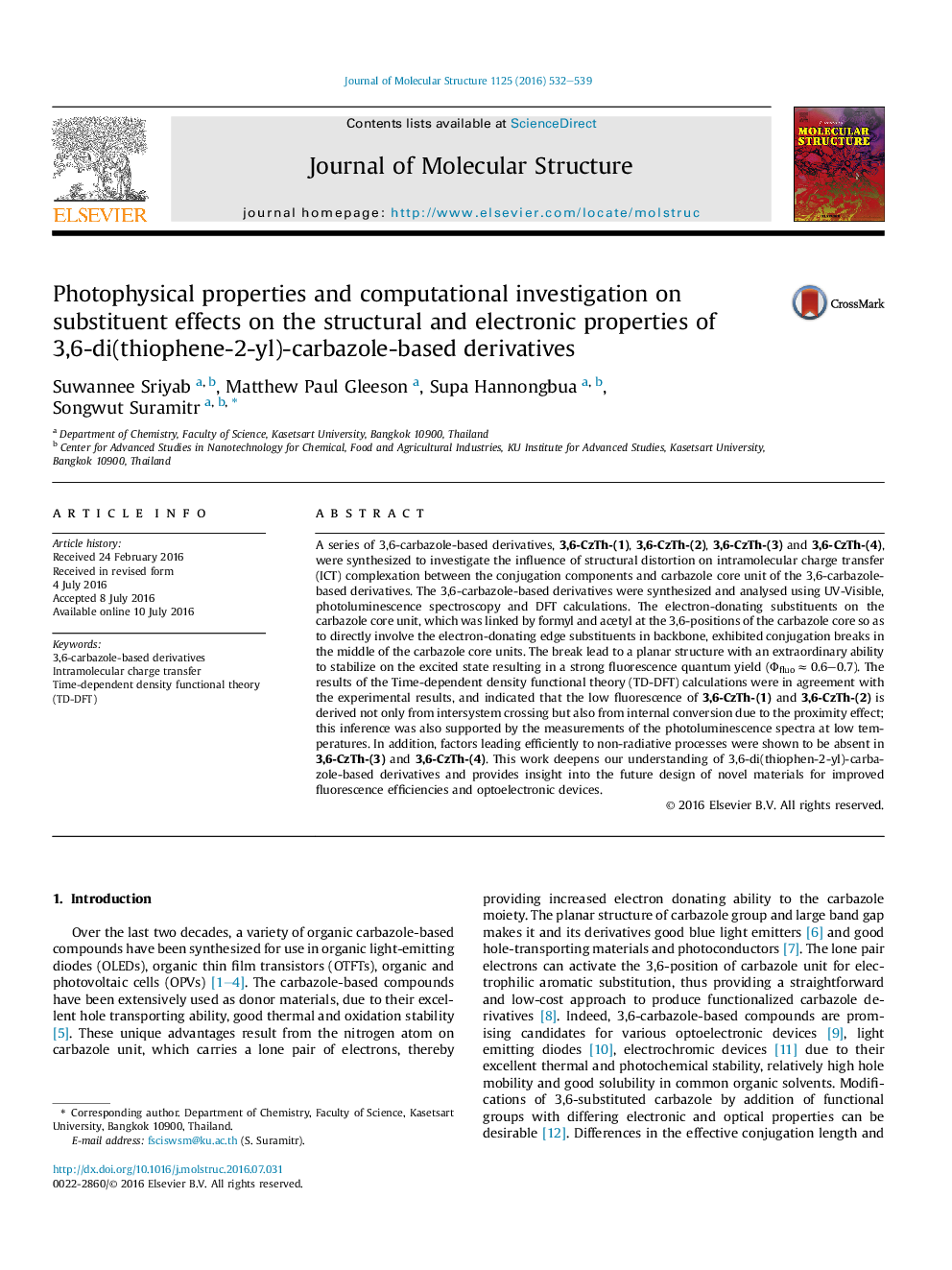| Article ID | Journal | Published Year | Pages | File Type |
|---|---|---|---|---|
| 1400967 | Journal of Molecular Structure | 2016 | 8 Pages |
•A series of 3,6-carbazole-based derivatives, 3,6-CzTh-(1), 3,6-CzTh-(2), 3,6-CzTh-(3) and 3,6-CzTh-(4), were synthesized.•The intramolecular charge transfer (ICT) complexation between the conjugation components and carbazole core unit were investigated.•DFT calculations were performed for the analysis of each spectral band.
A series of 3,6-carbazole-based derivatives, 3,6-CzTh-(1), 3,6-CzTh-(2), 3,6-CzTh-(3) and 3,6-CzTh-(4), were synthesized to investigate the influence of structural distortion on intramolecular charge transfer (ICT) complexation between the conjugation components and carbazole core unit of the 3,6-carbazole-based derivatives. The 3,6-carbazole-based derivatives were synthesized and analysed using UV-Visible, photoluminescence spectroscopy and DFT calculations. The electron-donating substituents on the carbazole core unit, which was linked by formyl and acetyl at the 3,6-positions of the carbazole core so as to directly involve the electron-donating edge substituents in backbone, exhibited conjugation breaks in the middle of the carbazole core units. The break lead to a planar structure with an extraordinary ability to stabilize on the excited state resulting in a strong fluorescence quantum yield (Фfluo ≈ 0.6–0.7). The results of the Time-dependent density functional theory (TD-DFT) calculations were in agreement with the experimental results, and indicated that the low fluorescence of 3,6-CzTh-(1) and 3,6-CzTh-(2) is derived not only from intersystem crossing but also from internal conversion due to the proximity effect; this inference was also supported by the measurements of the photoluminescence spectra at low temperatures. In addition, factors leading efficiently to non-radiative processes were shown to be absent in 3,6-CzTh-(3) and 3,6-CzTh-(4). This work deepens our understanding of 3,6-di(thiophen-2-yl)-carbazole-based derivatives and provides insight into the future design of novel materials for improved fluorescence efficiencies and optoelectronic devices.
Graphical abstractFigure optionsDownload full-size imageDownload as PowerPoint slide
